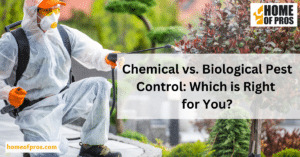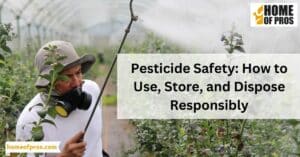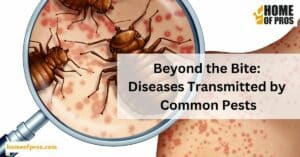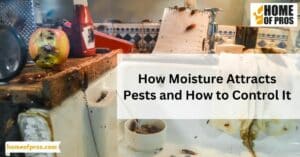Fortifying your abode against unwelcome critters is essential for peace of mind and health. Regularly inspect entry points, keep surroundings clean, and utilize natural repellents. Transform your home into an impenetrable fortress, ensuring pests remain a tale of the outdoors.
From roaches in the kitchen to termites in the foundation, household pests aren’t just a nuisance; they present real health and property risks. These unwelcome guests can transmit diseases, instigate allergies, and cause structural damage. Ensuring a pest-free home is vital for our well-being and the integrity of our abode.

Recognizing Common Invaders: Profiles of Pests
Every home, regardless of how well-maintained it is, might encounter unwelcome pests. It’s not just about the discomfort they bring; it’s about the potential harm they pose. To effectively combat these nuisances, we first need to recognize and understand their profiles and the signs that signal their invasion.
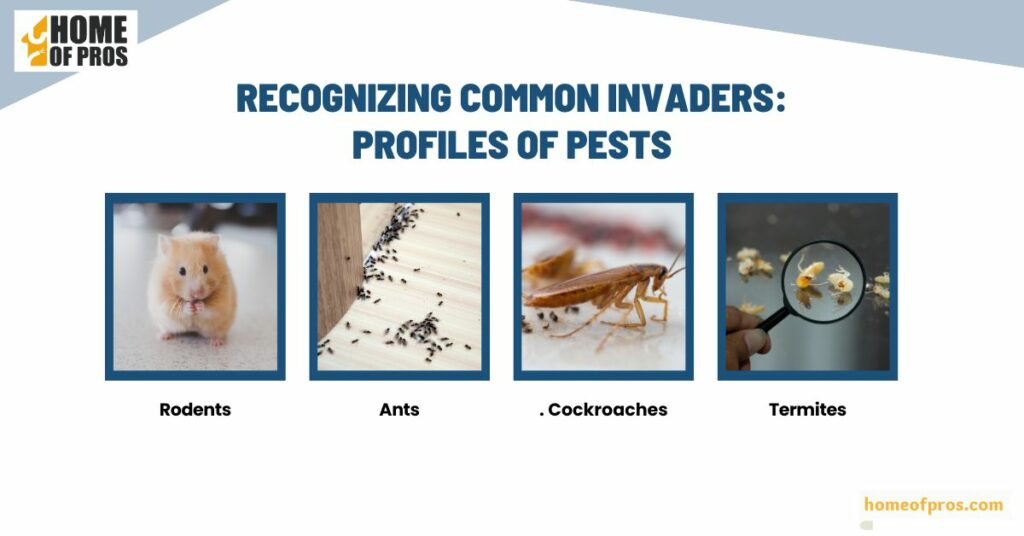
1. Rodents: Not Just a Cheese Affair
Rodents, encompassing creatures like mice and rats, are more than just little critters hunting for cheese. They can chew through electrical wires, leading to fire hazards, contaminate our food with bacteria, and serve as vectors for harmful diseases such as Hantavirus and Salmonella. Telltale signs of a rodent infestation include droppings, especially in hidden areas, gnaw marks on food containers or structures, and sounds of scampering or squeaking during the night.
2. Ants: The Tiny Invaders with a Big Presence
Ants might appear less threatening due to their size, but they can be persistent pests in a household. While most are scavengers, some species, like carpenter ants, can cause structural damage. The presence of long trails, especially in kitchen areas or near food sources, is a clear indication. Additionally, fine, sand-like deposits or small anthills outside the home can also be a giveaway of their presence.
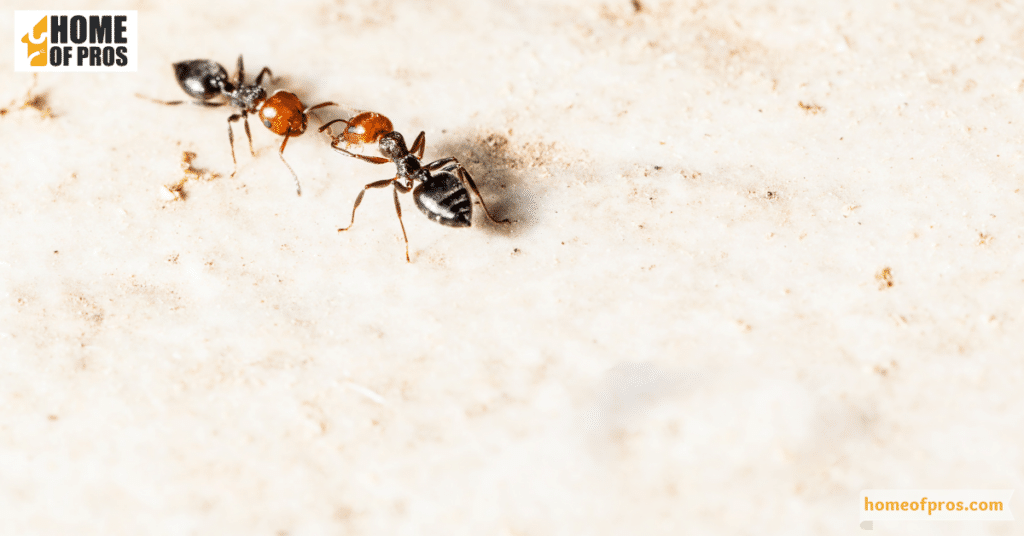
3. Cockroaches: The Masters of Stealth
Cockroaches, with their rapid and secretive movements, are known to be vectors for several diseases due to the bacteria and parasites they carry. Beyond health concerns, they can also trigger allergies and asthma, especially in vulnerable individuals. Their presence can be deduced from droppings that resemble ground pepper, egg cases left in secluded spots, and a unique musty odor often found in areas of significant infestation.
4. Termites: The Silent Destroyers
Termites are pests that eat away at the very foundations of our homes. Consuming wood can compromise the structural integrity of buildings if left unchecked. Telltale signs include mud tubes on walls or foundations, wood that sounds hollow when tapped, and discarded wings near windows or other entry points, indicating a recent termite swarm.
Knowledge is our foremost weapon in the battle against these common household pests. By understanding their characteristics and recognizing their telltale signs, homeowners can take proactive measures. This not only ensures the integrity and cleanliness of their homes but also the health and well-being of their families.
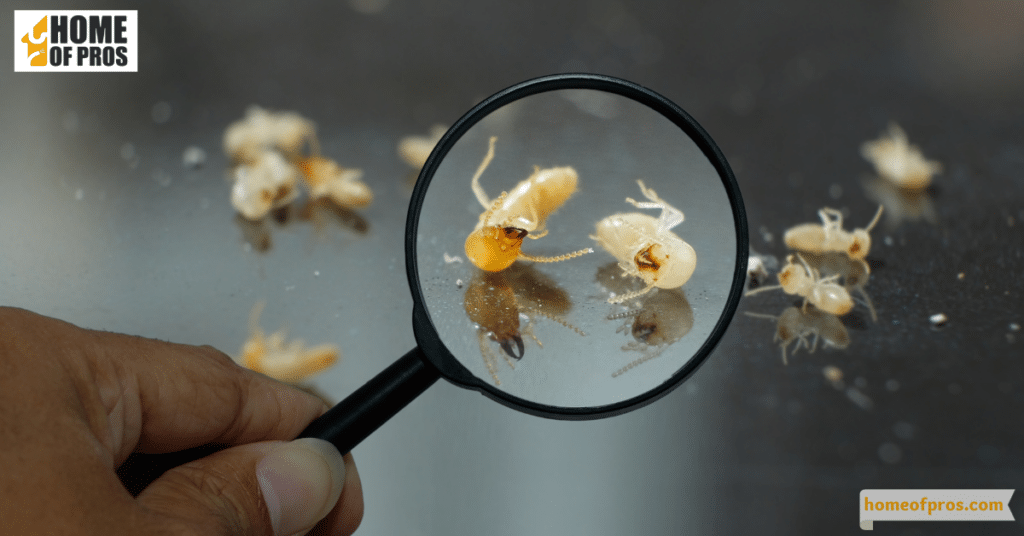
Where Pests Gain Access
Even the most fortified homes can become vulnerable to pesky intruders. Understanding where these pests gain entry is the first step to bolstering our homes against them.
- Cracks and crevices: Tiny gaps in foundations or walls can be highways for ants, spiders, and more.
- Vents: Often overlooked, vents can provide access for larger pests like rodents.
- Doorways: Gaps under doors or ill-fitted frames are inviting for a range of insects.
- Windows: Damaged screens or gaps in window frames can be an entry point for flies, mosquitoes, and other pests.
- Roofing: Loose tiles or gaps in roofing can offer entry for birds, bats, and squirrels.
- Utility entrances: Where cables or pipes enter homes, there can be openings for pests.
- Importance of Sealing: Proper sealing acts as the first barrier against unwanted guests.
- Regular Inspection: Routine checks ensure that newer vulnerabilities aren’t left unattended.
Guarding our homes against pests starts with vigilance and understanding. By identifying and securing these common entry points, we lay the foundation for a safe, comfortable, and pest-free living environment.
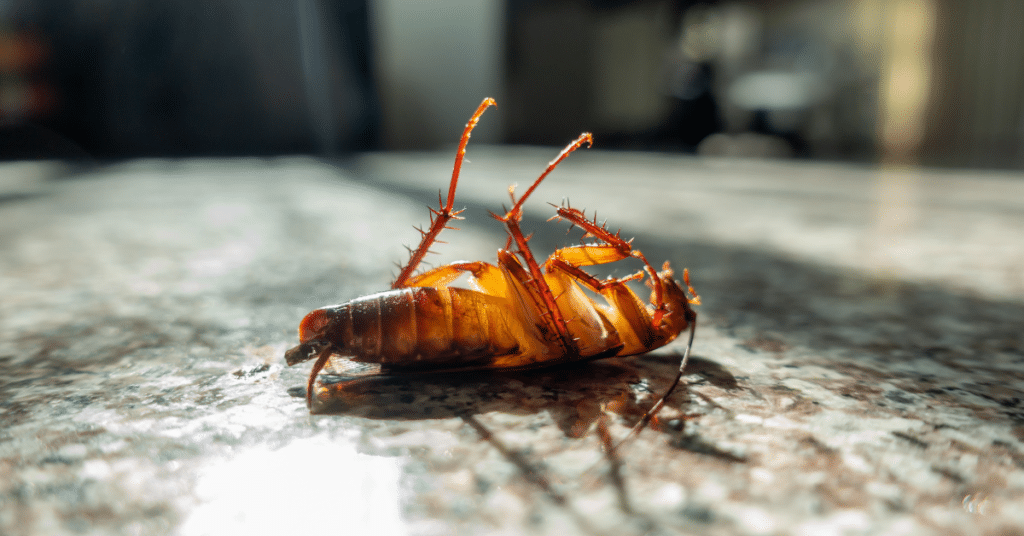
Sanitation and Cleanliness: The First Line of Defense
Sanitation and cleanliness are more than just measures of good housekeeping; they form the primary line of defense against household pests. A clean environment is often less inviting to unwanted invaders, making it vital in our quest for a pest-free abode.
- Denying Habitats: Pests, from bugs to rodents, thrive in cluttered and dirty environments. Regular cleaning deprives them of favorable habitats, making our homes less appealing.
- Limiting Food Sources: Many pests are opportunistic feeders. By cleaning up food remnants and storing items securely, we diminish the food sources that attract them.
- Spotting Early Signs: Regular cleaning routines can help homeowners spot early signs of infestation, such as droppings or damage, allowing for timely intervention.
- Deterring Breeding: Cleanliness ensures that potential breeding sites, especially damp and dark areas, are minimized, disrupting the life cycles of pests.
While various deterrents and treatments can aid in managing pests, the foundation of any effective pest control strategy lies in sanitation and cleanliness. By instilling good cleaning habits, we can proactively prevent many infestations before they begin.

Exterior Defense: Creating a Barrier Outside Your Home
While the interiors of our homes are crucial, the first line of defense against pests starts outside. By creating a solid exterior defense, we can significantly reduce the risk of pests ever setting foot inside our sanctuaries.
Landscaping Tips to Deter Pests:
- Choose Pest-Resistant Plants: Some plants naturally repel certain pests. For instance, marigolds deter nematodes, and lavender can keep moths and mosquitoes at bay.
- Avoid Over-Mulching: Thick layers of mulch can attract termites. It’s best to limit mulch layers and keep them away from your home’s foundation.
- Ensure Proper Drainage: Stagnant water is a breeding ground for mosquitoes and attracts various pests. Slope landscapes away from the home and keep gutters clear to prevent water pooling.
- Prune Regularly: Overhanging branches can act as bridges for pests like ants and rodents. Ensure trees and shrubs are regularly pruned and kept away from the home.
Barriers to Keep Pests at Bay:
- Install Mesh and Screens: Fine mesh and screens on windows, vents, and chimneys can prevent larger insects and small animals from entering.
- Seal Gaps and Cracks: Use caulking or sealants to close off any potential entry points around the home’s foundation, windows, and doors.
- Utilize Fencing: A good fence can deter larger pests, like rabbits and deer, from accessing your garden and possibly moving closer to your home.
The defense of our homes from pests begins well before the threshold. By adopting effective landscaping practices and erecting solid barriers, we can ensure that the majority of pests remain an external concern, keeping our homes secure and serene.

Regular Maintenance: A Schedule for Fortress Strength
To keep a home truly fortified against pests, regular maintenance is indispensable. Just as a fortress requires constant checks and repairs, our homes demand routine inspections and upkeep to ensure they remain impenetrable to unwanted invaders.
Table: Maintenance Schedule for Year-Round Protection
| Season | DIY Tasks | Professional Tasks | Tips |
|---|---|---|---|
| Spring | – Check screens and windows for damage. -Clean gutters and remove debris. |
– Termite inspection. – Pest-specific treatments, if needed. |
Keep an eye out for signs of overwintering pests emerging. |
| Summer | – Ensure landscaping is not touching the home. -Check for pooling water. |
– Mosquito control treatments. – Rodent checks. |
Seal garbage bins tightly to prevent attracting pests. |
| Autumn | – Seal cracks and gaps in the home’s exterior. -Store firewood away from home. |
– Final pest treatments before winter. – Insulation checks for pest damage. |
Clean fallen leaves and fruits from the yard. |
| Winter | – Inspect the attic and basement for signs of pests. -Check the pantry for any stored-product pests. |
– Rodent-proofing measures. – Indoor pest checks. |
Ensure the house is properly insulated to deter pests seeking warmth. |
Adherence to a regular maintenance schedule, complemented by seasonal vigilance, ensures our homes stand strong against pest invasions throughout the year. Whether it’s a DIY check or a professional assessment, these measures, when performed routinely, form the cornerstone of a truly pest-free dwelling.
Conclusion
Pest prevention is not a one-time effort but a continuous commitment to maintain the sanctity and safety of our homes. From understanding the habits and habitats of common invaders to implementing proactive measures both inside and out, every step contributes to building a robust defense against these unwelcome guests. By combining knowledge, regular maintenance, and timely interventions, homeowners can ensure that their living spaces remain comfortable, healthy, and, most importantly, pest-free.


